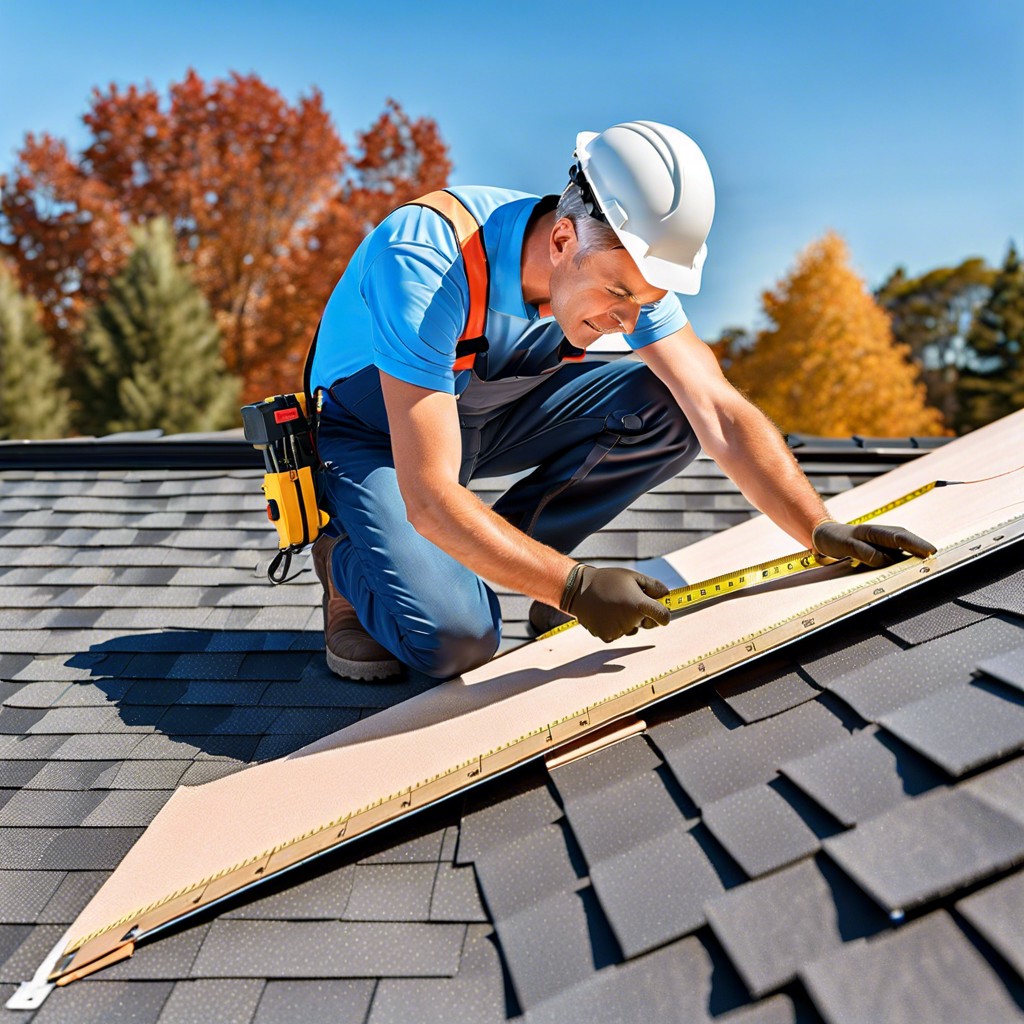Last updated on
Learn how to accurately measure your roof with these straightforward steps.
Key takeaways:
- Accurately measure roof square footage for material estimation.
- Calculate roof squares by dividing total area by 100.
- Utilize roofing software for precise measurements and material estimates.
- Consider different roofing materials and their coverage per bundle or square.
- Prioritize safety by wearing appropriate gear and checking weather conditions.
Measure Roof Square Footage

Start by finding the length and width of each roof plane. Multiply these two dimensions to get the area of each plane. If the roof has multiple planes, add the area of each to get the total square footage. This figure represents the actual surface area that needs coverage, accounting for any dormers or extensions.
For roofs with complex shapes, break them down into simpler geometric shapes like rectangles or triangles. Calculate the area for each shape and then sum them for the final total. Always use consistent measurement units and double-check your calculations to avoid costly errors in material estimation.
Remember, accurate measurements form the backbone of efficient roofing projects, saving time and resources.
Calculate Roof Squares
To determine the number of roof squares, which cover 100 square feet each, divide the total roof area by 100. For example, a 2,500 square foot roof equals 25 squares.
Understanding this is critical for precise material estimates and cost calculations:
- Use the sum from your square footage calculation.
- Always round up to ensure you have enough materials, as roofs might need extra due to waste or unique angles.
If measuring by hand seems like threading a needle without enough light, consider using digital tools or consulting with a professional to double-check your figures. Remember, an ounce of prevention is worth a pound of cure, especially on a project as significant as roofing.
Using Roofing Software for Accuracy
Roofing software streamlines the measurement process, sidestepping human error and potentiating precision with technology. These programs often integrate images from satellite, drone, or blueprint sources to provide real-time data. Users can input specific parameters, and the software calculates both the necessary surface area and the estimated amount of materials required. This not only expedites the quoting process but also minimizes waste by providing exact specifications for material purchase.
For roofers who juggle multiple projects, this tool is a game changer. It saves time on manual calculations and site visits, making the workflow more efficient. The up-to-date technology ensures that measurements are accurate, empowering roofing professionals to deliver reliable services to their clients with confidence.
Estimating Roofing Materials Based On Measurements
Once you have the total square footage and roof squares calculated, the next step is estimating how much material you’ll need. Keep in mind, different roofing materials cover different amounts of area per bundle or square.
– **Shingles**: Generally, one square of shingles covers 100 square feet. Depending on the shingle type, a standard bundle covers about 33.3 square feet, so you’ll need approximately three bundles per square.
– **Tiles**: Roof tiles, whether clay, concrete, or slate, often require extra materials for breakage and cutting. It’s smart to add 10% more tiles to your calculations.
– **Metal Roofing**: Sold by the square or panel, metal roofing differs in sizing based on the panel type and profile. Measure the panel lengths and correlate those against your roof’s size to order accurately.
– **Underlayment**: Essential for waterproofing, underlayment rolls typically cover 400 square feet. Align this with your total roof area to determine how many rolls are required.
Remember, it’s always better to have slightly more material than estimated, as it accommodates potential wastage, cuts, and fitting adjustments. Keep a keen eye for deals from suppliers; bulk purchases might save some cash!
Safety Precautions During Roof Measurements
Safety should always be your priority when measuring a roof. Before stepping onto any rooftop, wear non-slip shoes to prevent falls. A well-fitted harness is essential for steep or high roofs, offering a safeguard against potential accidents.
Check the weather forecast; avoid roof measurements during wet or windy conditions as these can create hazardous environments. Always use a sturdy ladder, and make sure it is secured before climbing.
Consider bringing a buddy along for the task. Not only does this provide a safety backup, but it also makes the process quicker and more efficient. Lastly, keep a fully charged phone with you for emergency communication if the need arises. These precautions help create a safer environment for roof measurements.




